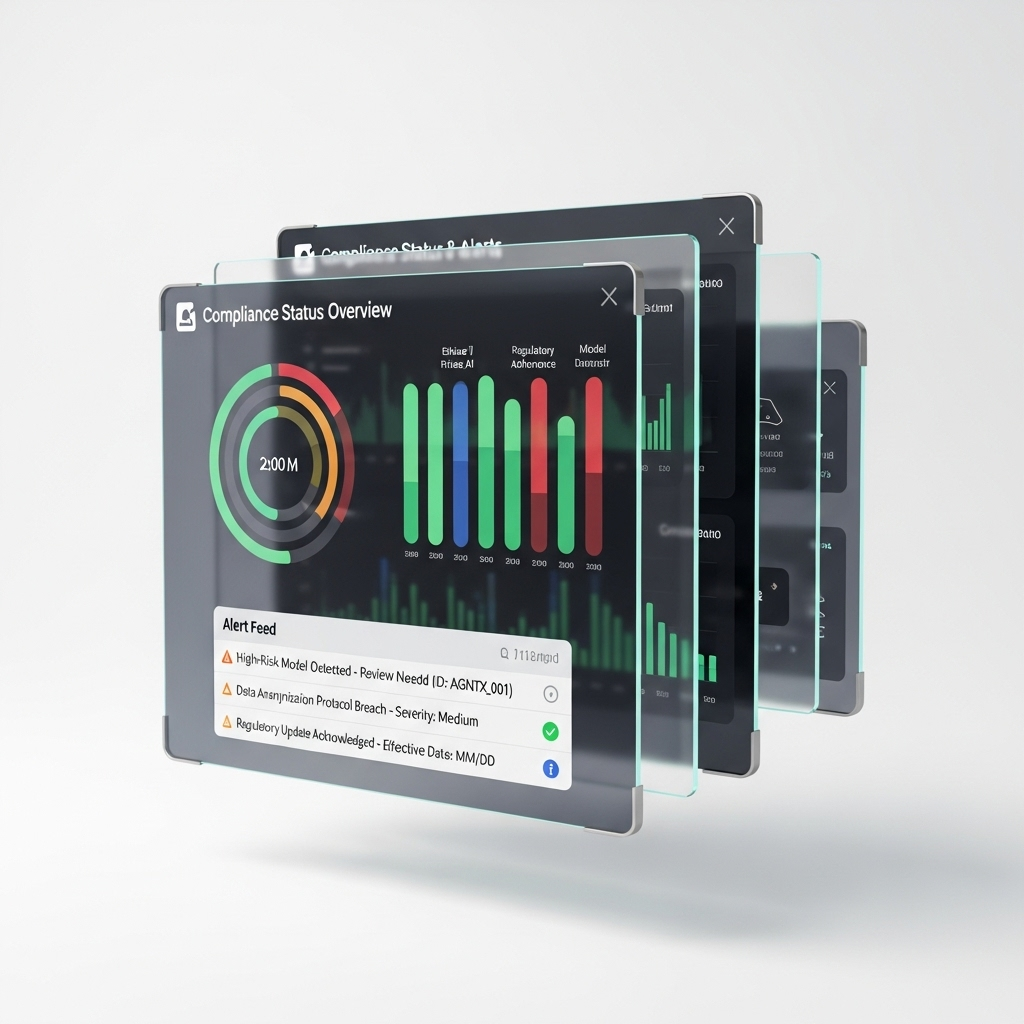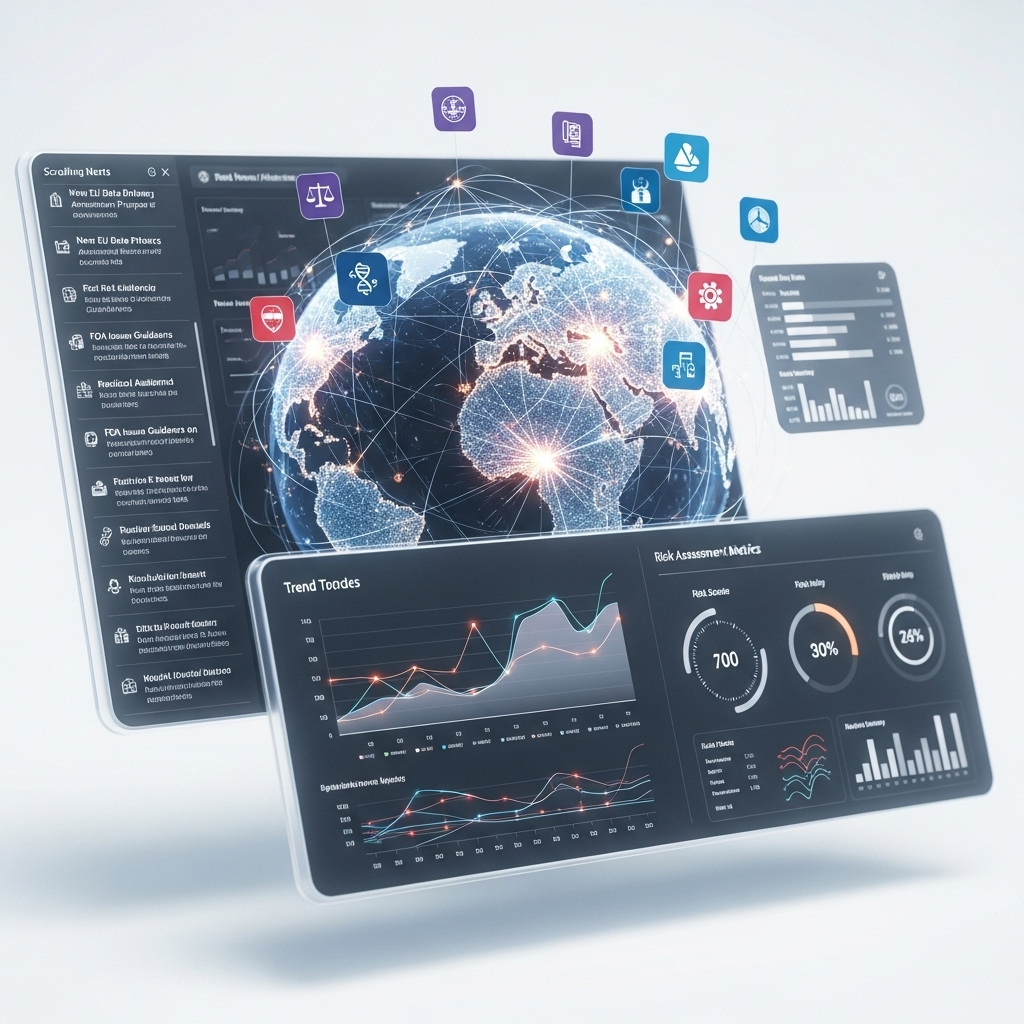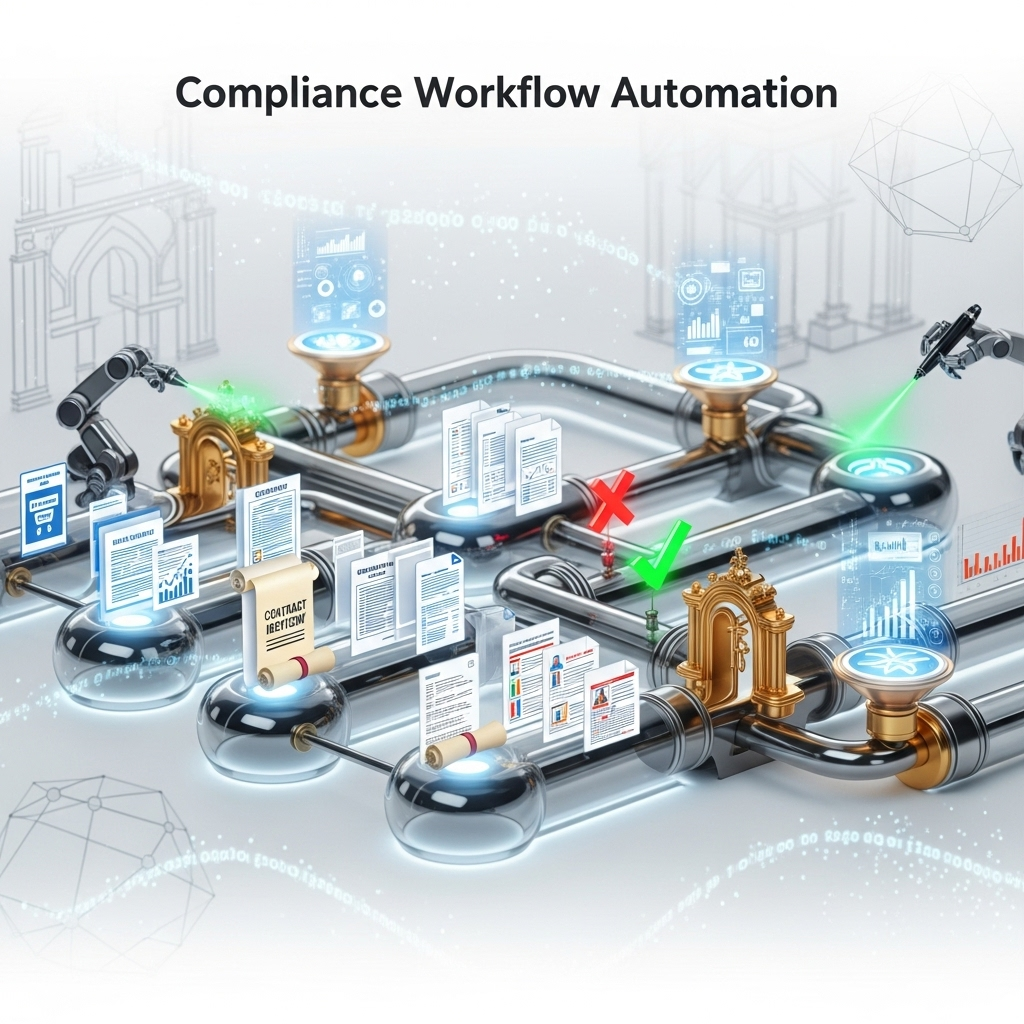Revolutionizing compliance monitoring through AI-powered regulatory tracking, automated analysis, and predictive insights across global jurisdictions

In today's rapidly evolving regulatory landscape, organizations face an unprecedented challenge: staying current with thousands of regulatory changes across multiple jurisdictions while ensuring complete compliance adherence. Traditional compliance monitoring approaches are reactive, manual, and increasingly inadequate for the complexity of modern regulatory environments. The Autonomous Regulatory Intelligence Agent represents a paradigm shift from reactive compliance monitoring to proactive, intelligent regulatory tracking that operates continuously, learns autonomously, and provides predictive insights that transform how organizations approach compliance.
The regulatory environment has become exponentially more complex over the past decade. With over 40,000 new regulations published annually across major jurisdictions, compliance teams are overwhelmed by the sheer volume of regulatory content that must be monitored, analyzed, and implemented. This complexity is compounded by the interconnected nature of modern regulations, where changes in one framework can trigger cascading compliance requirements across multiple regulatory domains.

The Autonomous Regulatory Intelligence Agent is built on a sophisticated multi-layer architecture that combines advanced natural language processing, machine learning, and knowledge graph technology to create an intelligent system capable of understanding, analyzing, and predicting regulatory changes with unprecedented accuracy and depth.
At the foundation of the agent lies a specialized NLP engine trained specifically on regulatory language and legal terminology. Unlike generic language models, this engine understands the nuanced vocabulary of regulations, including legal concepts, compliance terminology, and the hierarchical structure of regulatory frameworks. The engine processes regulatory documents not just for literal content, but for semantic meaning, regulatory intent, and practical implications.
The NLP engine employs transformer-based architecture enhanced with domain-specific training on millions of regulatory documents, enforcement actions, and compliance guidance across multiple jurisdictions. This specialized training enables the agent to:

The agent maintains a dynamic, continuously updated knowledge graph that maps the complex relationships between regulations, regulatory bodies, compliance requirements, and organizational obligations. This knowledge graph serves as the agent's "memory" and reasoning foundation, enabling it to understand how regulatory changes propagate through interconnected compliance frameworks.
The knowledge graph incorporates multiple dimensions of regulatory intelligence:
One of the most revolutionary capabilities of the Autonomous Regulatory Intelligence Agent is its ability to predict future regulatory changes before they are formally announced. Through analysis of regulatory patterns, legislative discussions, enforcement trends, and industry developments, the agent identifies early indicators of regulatory evolution.

The agent continuously monitors regulatory agencies, legislative bodies, and industry discussions to identify emerging regulatory trends before they become formal requirements. This predictive capability provides organizations with months or even years of advance notice for significant regulatory changes, enabling proactive preparation rather than reactive scrambling.
The early warning system analyzes multiple data sources:
When potential regulatory changes are identified, the agent automatically conducts comprehensive impact assessments, analyzing how proposed changes would affect different aspects of organizational operations. This analysis includes direct compliance implications, resource requirements, implementation timelines, and potential business impact.
The agent's scenario planning capabilities enable organizations to prepare for multiple regulatory futures, developing flexible compliance strategies that can adapt to different regulatory outcomes. This proactive approach significantly reduces the risk and cost associated with regulatory changes while enabling organizations to maintain competitive advantages through superior compliance preparedness.

The Autonomous Regulatory Intelligence Agent operates continuously, monitoring thousands of regulatory sources across multiple jurisdictions in real-time. This comprehensive monitoring capability ensures that no relevant regulatory change escapes attention, regardless of when or where it originates.
The agent monitors an extensive network of regulatory sources, including:
Not all regulatory changes require immediate attention or have equal impact on organizational operations. The agent employs sophisticated prioritization algorithms that consider multiple factors to ensure that critical changes receive immediate attention while filtering out regulatory noise.
The prioritization system considers:
Modern organizations operate across multiple jurisdictions, each with its own regulatory requirements and compliance obligations. The Autonomous Regulatory Intelligence Agent excels at managing this complexity through sophisticated cross-jurisdictional analysis that identifies overlapping requirements, conflicting obligations, and optimization opportunities.
The agent maintains detailed maps of jurisdictional authority and regulatory overlap, enabling it to identify when multiple jurisdictions impose requirements on the same activities. When conflicts arise between different jurisdictional requirements, the agent automatically identifies the most stringent standards and develops compliance strategies that satisfy all applicable requirements.
This capability is particularly valuable for:
The agent continuously analyzes regulatory frameworks across jurisdictions to identify opportunities for compliance harmonization and efficiency improvements. By understanding where regulations are substantially similar, organizations can develop unified compliance strategies that satisfy multiple jurisdictional requirements while minimizing resource requirements.
The Autonomous Regulatory Intelligence Agent continuously learns from every regulatory change, enforcement action, and compliance outcome to improve its accuracy and effectiveness. This learning capability ensures that the agent becomes increasingly sophisticated and valuable over time.
The agent employs multiple learning mechanisms:
The agent continuously optimizes its performance through:
The Autonomous Regulatory Intelligence Agent is designed for seamless integration with existing compliance management systems and workflows. Implementation can be customized to organizational needs and existing technology infrastructure.
Organizations can choose from multiple deployment options:
The agent can be extensively customized to meet specific organizational needs:
Organizations implementing the Autonomous Regulatory Intelligence Agent typically experience significant improvements in compliance effectiveness and efficiency. Key performance indicators include:
99.7% reduction in missed regulatory changes through comprehensive automated monitoring
85% accuracy in predicting significant regulatory changes 6+ months in advance
75% reduction in manual monitoring effort through intelligent automation
60% reduction in compliance violations through proactive identification and mitigation
The Autonomous Regulatory Intelligence Agent represents the current state of the art in regulatory intelligence, but continuous development ensures that capabilities continue to evolve and improve. Future enhancements include expanded international coverage, enhanced predictive capabilities, and deeper integration with compliance management systems.
As regulatory environments continue to evolve and become more complex, the agent's capabilities will expand to meet new challenges and opportunities. Organizations investing in autonomous regulatory intelligence today position themselves for sustained competitive advantage through superior compliance preparedness and reduced regulatory risk.
Experience the power of autonomous regulatory monitoring and predictive compliance intelligence. Schedule a personalized demonstration to see how the Regulatory Intelligence Agent can revolutionize your compliance operations.
Schedule Your Demo